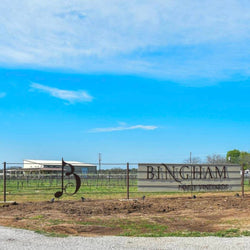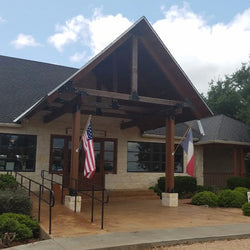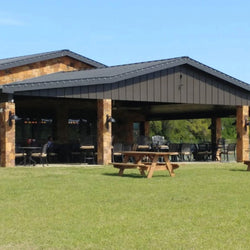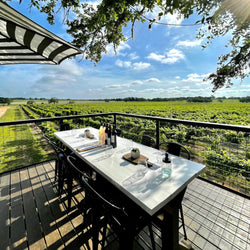If you are a fan of Texas white wines, you must have already heard of Viognier. And, if you haven’t had one yet, it needs to be on your list of wines to pick up this summer.
But how the heck do you say Viognier? Try “Vee-own-yay.” I think of it as “yay” this is good wine!
Where does this strangely named grape come from? Best known in the Rhône River Valley of southern France, Viognier was once a fairly common white wine grape in Europe. By 1965, the variety was almost extinct in France. One source reported only 30 acres in the entire country, with the Northern Rhône producing just about 500 gallons of this wine at that time. The decline of Viognier in France has much to do with the disastrous phylloxera infestation that struck Europe in the late 1800s. To dig a bit deeper into science, phylloxera is a nearly microscopic, sap-sucking insect that feeds on a grapevine’s roots and cuts off the flow of nutrients, ultimately killing the plant. As the real effects of phylloxera in France’s vineyards were causing great damage, the chaos of World War I in the early 1900s caused many family farms and vineyards to be abandoned. These two occurrences in history led to a major decline in many wine grapes across Europe. For Viognier specifically, the grape was endangered in France as recently as the 1980s.
For those of us who are total wine nerds, Viognier has quite a history to offer. Ampelography is the field of botany concerned with the identification and classification of grapevines. Ampelographers are those who study this field, and many believe the Viognier grape originated in Croatia. In fact, historical records show the grapes present in Condrieu, France during the reign of the Roman Empire. One legend declares the Roman Emperor Probus brought the vine to the region from the Dalmatian Coast in 281 AD. Now that’s a long time ago! Another story has the grape packaged with Syrah vines on a cargo ship navigating the Rhône River on the way to the region of Beaujolais. The ship was captured by a local group of outlaws and the vines ended up planted in several areas along the river.
The origin of the name Viognier is also obscure. It is most commonly believed to be named for the French city of Vienne, which was a major Roman outpost. Another belief is a foundation from the Roman pronunciation of “via Gehennae,” meaning the "Road of the Valley of Hell,” which could be an allusion to the difficulty of growing the grape.
Lucky for us white wine lovers, there is a steady increase in Viognier vines in France, and truly in many wine regions of the world. The Rhône Valley now has over 740 acres planted. Different regions within France have different rules and styles when it comes to making wine with Viognier, from whether it is barrel aged to what grapes it is allowed to be blended with. The styles can range from a light, crisp style produced in stainless steel to something with more body. You may be surprised to learn, in the northern Rhône Valley a small amount of this white grape is fermented with the red grape Syrah to stabilize the deep purple hue of the finished wine and to temper the tannins. This process is being duplicated in other regions today.
Since the late 1980s, plantings of Viognier in the United States and Canada have increased dramatically. California's Central Coast is the leading producer with over 2,000 acres planted. It has received international attention growing in Virginia, and in 2011 was named the state’s signature white grape. The grape can now be found in many states stretching across America, north in Canada’s British Columbia and Niagra regions, and even south into the Valle de Guadalupe in Mexico. Look further south to Brazil and Uruguay, and you can also find the grapes being grown in Australia, New Zealand, the Cape Winelands in South Africa, Israel, even Japan - and, of course, in Texas.
The grape requires a long, warm growing season to fully ripen. It seems to thrive in granite soils that retain heat and instill complexity in the fruit. On the other hand, in a climate that is very hot, the grape develops high levels of sugars and potential alcohol before the aromatic notes can develop. The vine is naturally low yielding, so it may not be economically viable for some small vineyards.
All this background may be interesting, but how does the wine taste? Viognier has the potential to produce full-bodied wines with lush, soft character, much like a Chardonnay. In contrast to the ever popular Chardonnay, the Viognier varietal has more pronounced natural aromatics to include notes of peach, pear, tangerine and honeysuckle. These lovely aromas can be destroyed by too much exposure to oxygen while the wine is being made. The quality of Viognier is also highly dependent on viticultural practices and climate. The age of the vine also has an determined effect on the quality of the wine produced. Many believe Viognier vines start to hit their peak after 15–20 years. In the Rhône, there are vines at least 70 years old.
Many winemakers enjoy working with the Viognier grape because of all of the variations that are possible. Some will allow contact with the skins to add complexity. The skin of Viognier is high in phenols, which are compounds that can leave an astringent component to the wine if juice is left in contact with the skins for too long. Some winemakers will put the wine through malolactic conversion. This is where the tart malic acid that is naturally found in grapes is converted to the softer lactic acid. The process can yield a rounder wine and gives more weight in the mouth while decreasing acidity. Another option is to use what the French call batonnage. When the yeast eats the sugar and produces alcohol, the yeast cells, which are called lees can be left in the wine and stirred regularly to create more texture in the wine. There are also choices for how to age the wine, in stainless steel tanks, barrels, or even concrete vessels. Just a little Viognier can go a long way to adding interest to other white and even red wines, so its a great grape to have on hand for blending. All of these different techniques yield a different finished wine, and with the Viognier grape, nearly every technique yields a tasty end result.
You may know how much I like to pair wine with food. Viognier is easy drinking on its own and is a wine I often open while I’m cooking. On the other hand, the bright acidity and full body also make it a great wine to enjoy with food. It can pair well with a light lunch like spinach salad with sliced peaches and almonds. Or consider it with grilled fish such as salmon or redfish, served over rice and snow peas and a simple lemon vinaigrette. Pork loin with apricot or peach chutney can bring out the fruitiness of this wine for a tasty summertime dinner.
You should also note that Viognier wines are generally best when opened young. While some can age, such as those made in the Condrieu region of the Rhône Valley of France, most Viognier made in other parts of the world are intended to be consumed within two or three years after release.
If you are interested in trying a French Viognier, I’d recommend E. Guigal’s Condrieu where the family is in it’s third generation of winemakers showcasing the Rhône’s unique qualities in this grape.
At home in Texas, Viognier is reported as the ninth most planted variety and the second most planted white wine grape. Viognier is the most awarded white grape in Texas, and 2018 was its most awarded recent vintage. The most awarded Texas Viognier still avaiable for purchase is the Bent Oak Winery Texas Viognier 2019 from the Texas High Plains.

The low yields can be frustrating to growers and winemakers alike, but the quality of the fruit is usually quite high. Personally, one of my favorite Texas white wines is the McPherson Cellars Viognier 2018, grown in the High Plains.

I also enjoy the Texas Heritage Viognier 2020, grown in the Texas Hill Country.

You’ll find several producers blending Viognier, especially with Roussanne and Marsanne. In fact, we’ll cover this traditional French blend in a future post. Whether a single varietal or as a blend, Viognier is a white wine worth knowing.
 Amie Nemec is a longtime wine lover, Sommelier, and founder of Perspective Cellars tasting room in Fredericksburg, Texas. She is now venturing down the path to learn winemaking, and is writing a book about her journey. Along with wine writing and food pairing posts, be on the lookout for Amie’s wine and book in coming years!
Amie Nemec is a longtime wine lover, Sommelier, and founder of Perspective Cellars tasting room in Fredericksburg, Texas. She is now venturing down the path to learn winemaking, and is writing a book about her journey. Along with wine writing and food pairing posts, be on the lookout for Amie’s wine and book in coming years!




